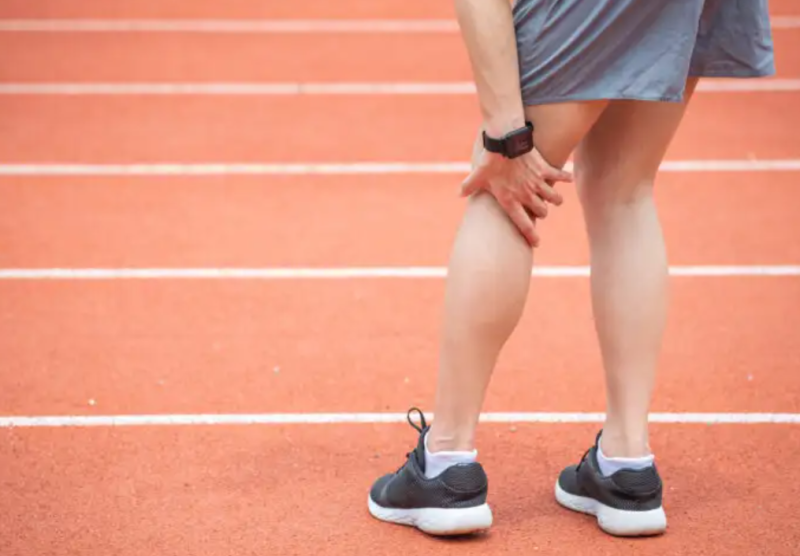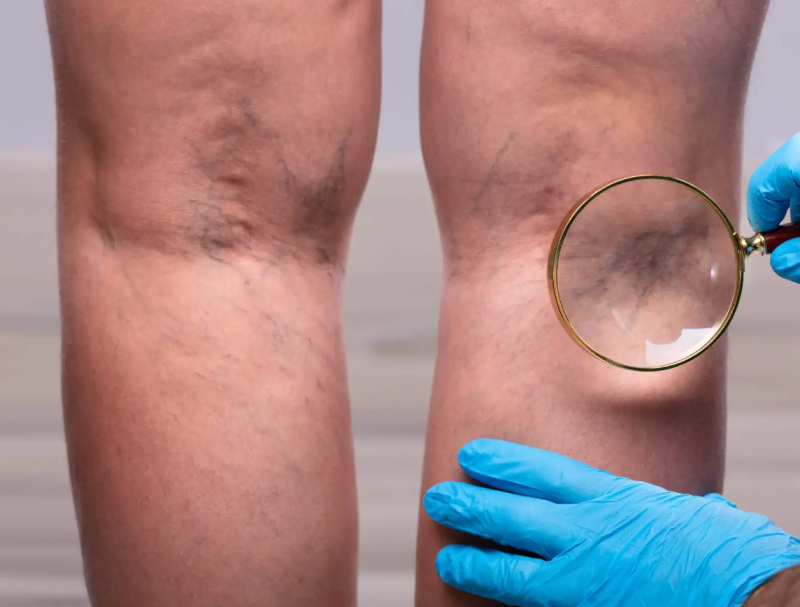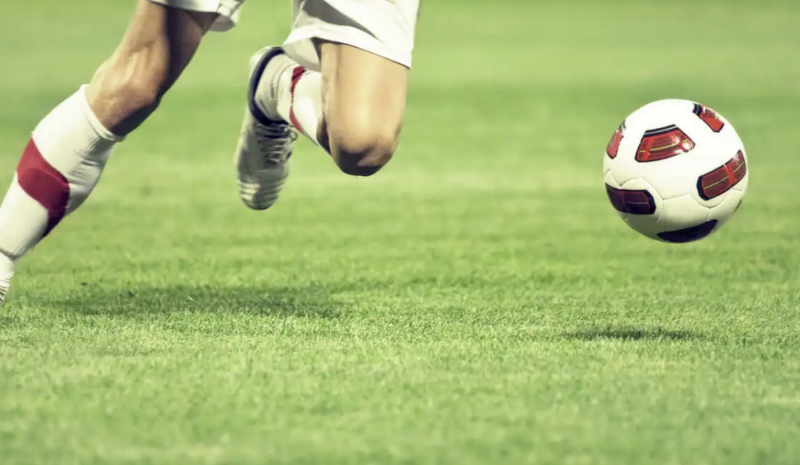
Pain behind the knee has a variety of causes, and all require medical evaluation for correct diagnosis and treatment. Anatomically, the back of the knee is called the popliteal fossa. It contains the popliteal artery, the popliteal vein, and various tendons and muscles.
Most of the causes of pain here have their origin in problems of the musculoskeletal system. In this way, the specialist doctor in traumatology and orthopedics must evaluate it.
The approach will depend on the cause. It almost always consists of prescribing anti-inflammatory analgesics, physiotherapy programming, and applying local methods to reduce discomfort.
Contents
Causes of pain behind the knee
In addition to pain, episodes of this type are usually accompanied by swelling and a mild or moderate inability to flex the joint. Since the knee is the largest joint in the body, both the front and back of the knee are subject to frequent injury. We will show you some causes of pain behind the knee that may explain your case.
1. Varicose veins
The term varicose veins refers to the dilation of the veins. In the lower limbs, it is more common in the legs and superficial venous pathways. Although it can also affect men, most episodes are concentrated in the female population. According to recent estimates, up to 25% of women suffer from them.
It is produced by incompetence of the valves that facilitate venous return to the heart, which causes blood retention. When they are present in the popliteal region, they can cause pain in the knee. In addition, they can be accompanied by a feeling of heavy legs or cause itching.
Treatment is by surgery or infiltration. However, varicose veins tend to recur.
2. Osteoarthritis of the knee
Osteoarthritis is caused by the cartilage’s wear and tear that cushions the bones’ ends. It can affect any joint but is often found in the hands, knees, hips, and spine. It is a common cause of pain behind the knee that is associated with the following factors:
- Advanced age.
- Previous joint injuries.
- Repeated stress on the joint.
- Overweight.
There is no definitive treatment. The symptoms can be controlled, but the damage is not reversible. Physical rehabilitation, maintaining a healthy weight, and managing pain with medication or physical techniques are recommended.
3. Baker’s cyst
Cysts are fluid-filled enlargements. Baker’s cyst is also called a popliteal cyst due to its anatomic location.
Baker’s cyst contains synovial fluid related to other knee pathologies, such as arthritis, meniscal injury, or cartilage wear. Its resolution requires treatment of the underlying pathology.
It manifests as pain behind the knee with the presence of a palpable and mobile mass. In addition, there is usually limited knee flexion, tightness, swelling, and increased tenderness.
4. Tendonitis or bursitis of the hamstring muscles
Tendinitis is the inflammation of the tendons, while bursitis is the inflammation of the synovial bag of a joint. The hamstring tendons are found in the back of the thigh and knee. Because of this, when you do intense physical activity, you are more prone to tendon elongation and subsequent inflammation.
An Andalusian Journal of Sports Medicine publication explains that hamstring injury is an essential sports injury today. Some of the most relevant risk factors are decreased quadriceps flexibility and coordination problems between the pelvis and the trunk muscles.
5. Injury to the menisci
The menisci are cartilages in the shape of the letter C responsible for cushioning the space between the tibia, the patella, and the femur. Sudden movements, especially lateral or twisting, can cause breakage or tearing of these tissues.
Depending on the area of the injury, the pain occurs. It can be generated behind the knee, on the sides, in front, and when walking, going up and down stairs. In addition, there is stiffness when mobilizing the joint, inflammation, an unstable knee sensation, and an inability to mobilize the leg.
The risk of developing this condition is exceptionally high in high-performance athletes, especially those who play soccer, tennis, or basketball. As a study published in the Cureus Journal of Medical Science in 2022 warns, it is estimated to affect 60 out of every 100,000 inhabitants. Its incidence is increasing, in part, due to the increase in sports habits in the population.
6. Injury to the lateral and cruciate ligaments
Four ligaments are responsible for joining the femur with the tibia: medial-lateral, external lateral, anterior cruciate, and posterior cruciate. A review published in Acta Ortopédica Mexicana explains that the symptoms may take some time to appear after the injury, including edema and “a feeling of failure or instability of the knee,” in addition to the typical pain.
Injury to these structures can result from blows to the knee, overextension of the joint, or changing direction when running or turning. It is associated with soccer, skiing, and basketball.7. Tendonitis of the popliteus muscle
The popliteus muscle is a small, short, flattened, triangular structure located at the back of the knee. A study published in Acta Pediatrica Costarricense explains that when there is overexertion or muscle overload, inflammation of the tendon can be caused, causing popliteal tendinitis.
It is one of the most frequent sports injuries and usually appears as a consequence of running in very downhill places or by overextending the leg or turning the knee abruptly. It is associated with running with poor form, especially downhill or with the leg extended. Also, when bending the knee suddenly.

Other causes of pain in the back of the knee
In practice, the list of causes of pain behind the knee is more extensive than the previous one. Most of the episodes are benign and often go away independently. In the spirit that you are aware of other triggers, we leave you with a list of other possible explanations:
- Leg cramps: When they occur in the upper calf, they can refer symptoms to the back of the knee.
- Runner’s Knee: Also known as patellofemoral pain syndrome. Although the pain is usually concentrated in the front, it can refer to the back.
- Strained calf muscles: Also known as gastrocnemius tendinopathy, pain, and other symptoms can reach the back of the knee.
- IT band syndrome: occurs when the tendon on the outside of the knee becomes inflamed and irritated by rubbing against the hip or knee bone. Like other cases, it can generate referred pain.
Other explanations are chondromalacia, infectious processes, gout and pseudogout in the knee joint, blows, trauma, and injuries.
How is the diagnosis when there is pain behind the knee?
The doctor should make a definitive diagnosis. The specialty will depend on the associated cause.
The cardiovascular surgeon or phlebologist evaluates varicose veins. What refers to the locomotor system is the field of the traumatologist and orthopedist.
The morphology of the knee should be evaluated, the presence of signs of inflammation (heat, redness, pain, or volume increase), mobility, and the different maneuvers that allow us to know the origin of the lesion. Imaging studies are usually required in some cases, in particular, MRI.
Treatment of pain behind the knee
Treatment will depend on the cause. Usually, it involves anti-inflammatory drugs, creams, or gels to reduce local inflammation and corticosteroid injections if the pain does not improve. In addition, it is accompanied by physical rehabilitation and even momentary immobilization. Again, treatment depends on the cause, which implies a previous diagnosis by a professional.
Pain behind the knee is very typical
Even though it is a reasonably common symptom among athletes, ignoring this problem and continuing to train can considerably worsen the situation. Going to the doctor early in case the essential measures to calm the pain do not work (such as taking over-the-counter pain relievers) is necessary for an early diagnosis and timely treatment.